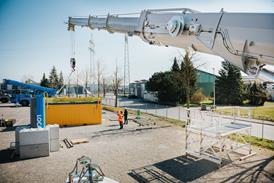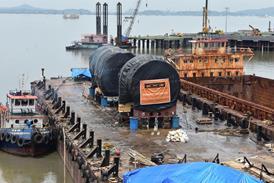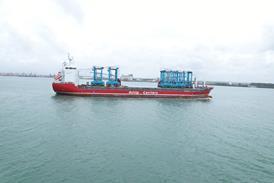February -26- Moving heavy and over-dimensional cargoes by rail in China can be a complicated, frustrating experience but perseverance can bring rewards, according to operators active in the region.
In China, breakbulk cargoes are classified according to three grades - first grade, second grade and super grade - explained Frank Cao, managing director of Globelink China Logistics, speaking at the first Breakbulk Asia conference held recently in Singapore. "As you might expect, strict regulations are in place for those who wish to transport heavy cargoes.
"Licences are needed and of course it is necessary to submit the specifications, dimensions and details of your proposed route. Then you need to enquire about the availability of special flat wagons, which are always difficult to obtain." There are formalities and red-tape to overcome and little compensation if the cargo is damaged. Tracking cargoes is a major problem, Cao added.
Jawad Kamel, president and CEO of Advance International Transport, says the size of the Chinese rail network throws up particular problems. "With 70,000 km of railway, it is impossible to make sure that all rail corridors are functioning properly. Some rail routes are purely for passenger trains, not freight, but this changes frequently so you often don't know which routes are open and which are not.
"The most important thing is to use a reliable forwarder with connections to the ministry of railways and the ability to successfully arrange the transportation and secure low-bed wagons," he said.
Siddique Khan, managing director of Globalink Logistics Group, points to issues with moving cargo across China's borders. "Central Asian borders are still heavily guarded and crossing frontiers is difficult. You can expect bottlenecks, several check points at each border and a lot of scrutiny of the cargo.
"China still sees railway transport as a domestic product, regardless of the cargo's final destination. The biggest challenge is the transfer of liabilities, which can cause severe problems. As soon as you enter another country, liabilities do not get transferred. And remember, Chinese rail wagons are designed for China's rail gauge. When you cross borders, everything changes and you need to re-evaluate the cargo's centre of gravity, as well as the lashing in place."
Operators add that commercial cargo is still taking a backseat to other freight such as military equipment, food supplies and coal.
Despite the challenges of bureaucracy and the limited availability of equipment - which can often be overcome by engaging an experienced forwarder - using China's railways can still be an attractive proposition for those who need to move heavy and otherwise abnormal cargoes. According to Cao, the cost of rail freight is a fraction of the price of moving goods by road. Rail distances can also be much shorter, especially on routes to Russia.
"Generally speaking, cargoes moving by Chinese railways can only be 3m high, 3m wide and 18m long but there is more flexibility in the central Asian states," said Kamel, whose company transported, by rail, over 460 pre-fabricated building modules for the US embassy in Dushanbe, Tajikistan.
"Of course there have been certain improvements in recent years but the Chinese railroad is still a state monopoly. However, compared to 15 years ago, the situation is now a picnic," concludes Khan.
For more information about the movement of heavy and over-dimensional cargoes by rail worldwide, make sure that you read the special report in the March/April edition of HLPFI, which will also include an in-depth report on the current state of market for project cargoes in China.















